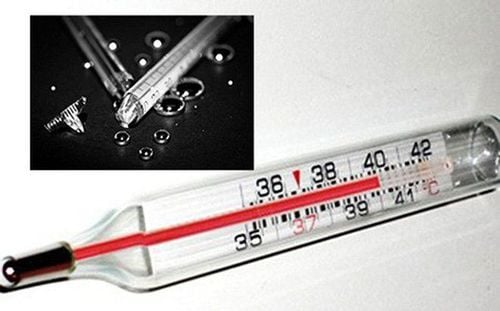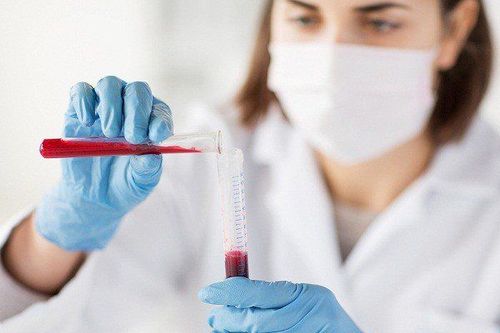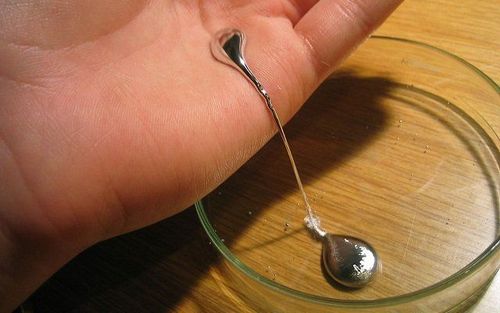This is an automatically translated article.
The article is professionally consulted by Master, Doctor Vu Huu Thang - Emergency Resuscitation Doctor - Emergency Resuscitation Department - Vinmec Ha Long International General Hospital. The doctor has nearly 10 years of experience in Emergency Resuscitation.Mercury is a heavy metal that is highly toxic to humans. If exposed to too much toxic mercury through a diet or environment contaminated with mercury, people can become poisoned and experience serious symptoms, dangerous to health.
1. What is mercury poisoning?
Mercury is a naturally occurring metal and is present in many everyday products in small amounts. Some industrial chains often use mercury in manufacturing processes, such as burning coal for electricity or making light bulbs.At room temperature, mercury exists as a liquid and easily evaporates into the air, spreading to the surroundings. Volatile mercury can enter rain, soil, and water, posing a danger to plants, animals, and humans.
Limited exposure to mercury is considered safe, but if toxic mercury accumulates it can be very dangerous. Consuming food or living in an environment contaminated with mercury can cause symptoms of mercury poisoning. The specific causes of mercury poisoning are:
Eating contaminated seafood; Toxic air in the area of industrial production and processing factories; Broken thermometer contact and old, broken sphygmomanometer; Traditional silver filling technique; Do related work. Exposure to high levels of mercury can put a person at risk for long-term complications, including:
Nerve damage, especially in children who are still developing; Reduced sperm count as well as fertility; Risk of malformations and reduced fetal survival rate; Restrictions on the growth and size of the infant; Increased risk of cardiovascular diseases.

2. Symptoms and early signs
2.1. Neurological symptoms Mercury poisoning can affect the nervous system, leading to typical symptoms such as:nervousness or anxiety; Irritability, depression or mood swings; Body numbness; Memory decline; Trembling. Many other symptoms will also appear when the level of toxic mercury in the body increases. These signs can vary depending on a person's age and exposure.
2.2. Signs in adults Adults with mercury poisoning may experience symptoms such as:
Muscle weakness; Feeling like holding metal in the mouth; Nausea and vomiting; Disorders of coordination of movement; No feeling in hands, face or other parts; Impaired vision, hearing or speech; Shortness of breath, difficulty walking or standing upright. 2.3. Signs in Children Mercury toxicity also poses a risk of affecting the development of young children in the first years of life. Children with mercury poisoning often manifest through signs such as:
Impaired motor skills; Weak thinking or problem-solving ability; Difficulty learning to speak or understand language; Unable to have good hand-eye coordination; Not aware of the world around. Mercury poisoning tends to develop insidiously over time when a person is regularly exposed to toxic mercury. However, some cases of mercury poisoning can also flare up rapidly if there is a specific mercury contamination incident.
If experiencing any symptoms that are suspected to be signs of mercury poisoning, the patient should immediately go to the poisoning prevention center at the hospital for timely treatment and monitoring.
3. Diagnosis of mercury poisoning
Doctors usually diagnose mercury poisoning by extracting some information from the patient, such as:What symptoms the patient is experiencing; Diet in recent times; Is the living and working environment near an industrial plant? If mercury poisoning is suspected, the patient will be asked to have a blood and/or urine mercury test to assess the level of toxic mercury in the body.

4. Treatment of mercury poisoning
4.1. Stop eating foods contaminated with mercury The first step in the treatment of mercury poisoning is to eliminate all sources of mercury that the patient was exposed to that led to the poisoning. If the cause is caused by foods, such as seafood, the person should stop consuming these foods immediately.4.2. Change in Habitat If mercury poisoning is related to a workplace or exposure to an environment that has been contaminated with mercury, doctors will ask the patient to move to a new location to reduce exposure or change the environment. change jobs until more safety measures are applied.
Mercury poisoning can cause some long-term side effects, so treatment and monitoring will be based on each specific infection.
4.3. Chelation therapy Some severe cases of mercury poisoning may require chelation therapy. This is a method of removing toxins and heavy metals from the body using chelation agents.
The drugs used in chelation therapy are responsible for binding with heavy metals in the blood, the toxins are then eliminated through urine excretion. However, Chelation therapy comes with certain risks and side effects, so this method is only prescribed by doctors when absolutely necessary.
Although mercury is toxic to humans, to date there is no standard cure for mercury poisoning. Therefore, it is best to actively avoid exposure to toxic mercury, eliminate risk factors by changing the diet, work and living environment contaminated with mercury to reduce mercury levels in the body. body.
Besides, it is advisable to learn about how to recognize the signs of mercury poisoning to see a doctor at the first appearance of symptoms. Mercury poisoning can have long-term consequences, the most dangerous of which is affecting the healthy development of young children.
Please dial HOTLINE for more information or register for an appointment HERE. Download MyVinmec app to make appointments faster and to manage your bookings easily.
Article reference source: medicinenet.com,medicalnewstoday.com













